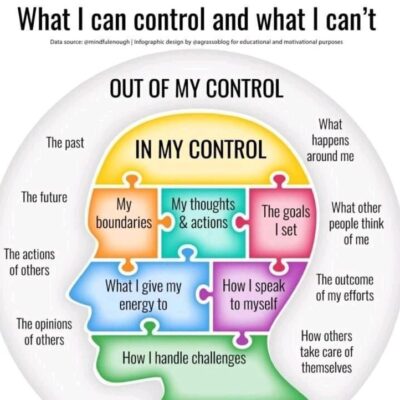Enhancing learning through personalisation and immersive experiences
As education evolves, the integration of advanced technologies, such as artificial intelligence (AI) and virtual reality (VR), is transforming the teaching landscape. The British National Curriculum for Computing programmes of study aims to equip students with the skills required to navigate and excel in an increasingly digital world. The incorporation of AI and VR into teaching not only enhances the learning experience but also optimises the teacher’s role, creating an ideal environment for effective education.
Embracing AI in the classroom
AI technology has the potential to revolutionise the way educators teach and students learn. By incorporating AI into the classroom, teachers can personalise learning experiences, provide real-time feedback, and access vast amounts of data to inform their teaching strategies. Here are some key ways AI can enhance the teaching experience:
- Personalised learning: AI systems can analyse students’ performance data to tailor learning experiences to individual needs. This ensures that each student receives the appropriate level of challenge and support, promoting better understanding and retention of material.
- Real-time feedback: AI-driven tools can provide instant feedback on students’ work, allowing teachers to identify areas where students may be struggling and offer immediate assistance. This real-time assessment helps to address learning gaps promptly.
- Data-driven insights: AI can aggregate and analyse data on student performance, helping teachers identify trends and patterns. This information enables educators to make informed decisions about their teaching methods and adjust their strategies to maximise effectiveness.
- Administrative efficiency: AI can automate administrative tasks, such as grading and attendance tracking, freeing up more time for teachers to focus on instruction and student engagement.
The role of VR in education
Virtual reality offers immersive experiences that can make learning more engaging and interactive. The Meta Quest 3, for instance, provides a platform for educators to create vivid, experiential learning environments that can enhance students’ understanding of complex concepts. Here’s how VR can transform the classroom:
- Immersive learning environments: VR can transport students to different times and places, allowing them to experience historical events, explore distant planets, or dive into the depths of the ocean. This immersive approach makes learning more engaging and memorable.
- Simulated experiments: VR can be used to conduct virtual experiments and simulations that might be too dangerous, expensive, or impractical to perform in a traditional classroom. This hands-on approach fosters deeper understanding and practical skills.
- Collaborative learning: VR platforms can facilitate collaborative learning by allowing students to work together in virtual environments. This promotes teamwork and communication skills, which are essential for success in the modern workforce.
- Inclusivity: VR can provide customised learning experiences that cater to diverse learning needs, including those of students with disabilities. By offering alternative ways to interact with content, VR ensures that all students have equal access to learning opportunities.
Creating the ideal AI-VR-enabled classroom
To maximise the benefits of AI and VR in education, it is crucial to create an environment that supports these technologies effectively. Here are some strategies for creating the ideal AI-VR-enabled classroom:
- Professional development for teachers: Educators need to be proficient in using AI and VR tools to integrate them effectively into their teaching. Ongoing professional development and training sessions can help teachers stay updated on the latest technological advancements and best practices.
- Curriculum integration: AI and VR should be seamlessly integrated into the curriculum to enhance existing teaching methods rather than replace them. This integration should align with the learning objectives of the British National Curriculum for Computing programmes of study.
- Infrastructure and support: Schools need to invest in the necessary infrastructure, such as high-speed internet, VR headsets, and AI software, to support the integration of these technologies. Additionally, technical support should be readily available to address any issues that arise.
- Ethical considerations: The use of AI and VR in education raises ethical considerations such as data privacy and the digital divide. Schools must implement policies to protect students’ data and ensure that all students have access to these technologies.
- Student-centred approach: The ultimate goal of integrating AI and VR into education is to enhance the student learning experience. Teachers should focus on how these technologies can be used to support individual learning needs and promote student engagement.
Case study: Implementing AI and VR in a British classroom
Consider a Year 9 ICT class studying computer programming. Using AI, the teacher can personalise learning modules based on each student’s progress and areas of difficulty. For example, if a student struggles with loops and iterations, the AI system can provide additional resources and practice problems tailored to that concept.
Simultaneously, VR can be employed to create a virtual programming lab where students can write and test their code in a simulated environment. This hands-on experience not only reinforces theoretical knowledge but also helps students develop practical coding skills. The VR lab can also facilitate collaborative projects, allowing students to work together on coding challenges in a shared virtual space.
Conclusion
The integration of AI and VR in education presents a unique opportunity to enhance the teaching and learning experience. By leveraging these technologies, educators can create more personalised, engaging, and effective learning environments. As we continue to innovate and adapt to the digital age, the ideal teacher experience will embrace AI and VR, preparing students for the future while making learning an exciting and immersive journey.
By addressing the challenges and maximising the potential of AI and VR, educators can ensure that they are not only meeting the requirements of the British National Curriculum for Computing programmes of study but also setting a new standard for education in the 21st century.
#ArtificialIntelligence #VirtualReality #EducationInnovation #MetaQuest3 #EdTech #BritishNationalCurriculum #ComputerScience #ICT #PersonalisedLearning #ImmersiveEducation




